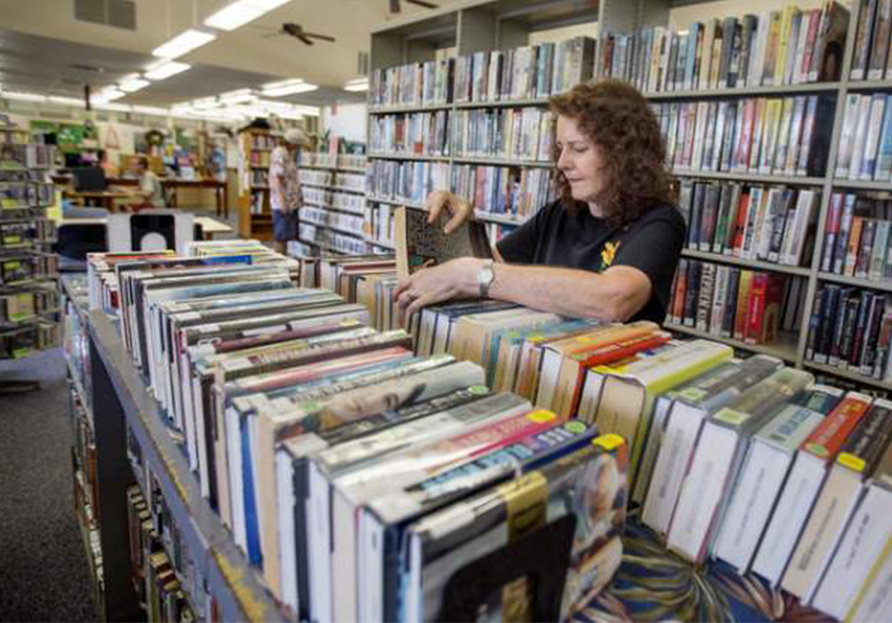The state is about to kick off preliminary planning for a new regional public library for underserved residents in the rapidly growing Puna district.
During the 2014 legislative session, state lawmakers appropriated $800,000 for a feasibility study and the initial phases of the project, which will complement the three libraries currently serving Puna residents in Pahoa, Keaau and Mountain View.
The new facility will follow a relatively new model for libraries, said state Sen. Russell Ruderman, D-Pahoa, who pushed for the funding.
“This will be a modern library,” he said, “with e-books, e-readers that can be lent out, meeting spaces. It’s really a learning center. We have a very fast growing and very poor population, and I feel a library is a mechanism for people to climb out of poverty, a way to educate themselves.”
The regional library also follows a new trend, moving Hawaii away from the traditional conjoining of public libraries with school libraries, which can create access headaches for students and community members alike.
As an example, Ruderman pointed to the Pahoa Library, which shares its services with Pahoa High and Intermediate. During school hours, students are not allowed to access the library, something which seemingly runs counter to the idea of having a school library in the first place.
“This is something that happens wherever there is a school/public library. You have use conflicts, with people in the public coming onto campus, and school administrators can’t know who that person is and whether they should be on campus or not. It creates a security concern,” he said.
About a year ago, the governor released about $250,000 of the $800,000 to fund a consultant’s feasibility study for the regional library, said Keith Fujio, special assistant to the state librarian. Negotiations with Honolulu-based consultant Group 70, which will conduct the study, appear to be nearing completion.
“Currently, they’re working on defining the scope of (Group 70’s) services and what they’ll come up with,” he said.
Once the contract is finalized, Group 70’s work will be guided in part by information gathered at public focus group meetings, like one that was held Oct. 27 in Pahoa, Ruderman said.
Between 70 and 100 attendees shared their thoughts at that meeting.
“We had a pretty good turnout for the brainstorming session,” Fujio said. “We wanted to talk to the patrons in the impacted areas to see what they need and demand from public libraries, what they would like to see, such as special programs in particular, or special collections. … We took down almost everything they said and were suggesting.”
It’s still too early in the discussion to narrow down where the new library will be located, but one concern among many residents is that access to libraries doesn’t become tougher than it is already.
“What I’m hoping will come out of all this as a result is that they will see a real effort needs to be made to continue to provide good service, on a local basis, around Puna,” said Lee Maniscalco, president of the Friends of the Pahoa Library.
Maniscalco called attention to the fact that the geographic area of Puna is about equal to that of the entire island of Oahu, necessitating multiple accessible spots that won’t require long drives by residents in areas as far flung as Volcano or Kalapana Sea View Estates. Ruderman said it was his understanding that whatever site is chosen, the other libraries in Puna will continue to serve their local populations.
For instance, building the new regional library in Pahoa, a plan he supports, would mean that the current Pahoa Library would revert to serving just the school full-time, leaving the new regional library to serve the community.
Much remains to be decided regarding the new facility, Ruderman added, with the entire process of building the library expected to take somewhere between seven and eight years before it is ready to serve the public.
One thing that isn’t a question, however, is the need for a new library to serve Puna, he said.
“Pahoa Library is the third most used library on our island, by far,” he said. “And they’re servicing both lower and upper Puna. … It’s a very fast growing area.”
In fiscal year 2015, Hilo Public Library put up the biggest numbers, with a total circulation of 394,715 items being checked out, said Paul Mark, spokesman for the Hawaii State Public Library System. Kailua-Kona came in second at 141,579, and Pahoa came in third at 100,398.
Thelma Parker Memorial Public Library in Waimea took fourth place, with a circulation of 89,803.
